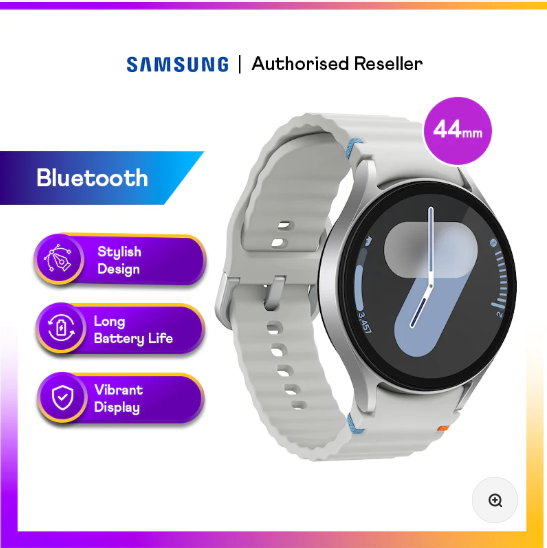Wi-Fi 7 is the next evolutionary leap in wireless networking, bringing extraordinary benefits in today’s day and age, where connectivity is at the heart of both work and play. Understanding the key differences between Wi-Fi 6 and Wi-Fi 7 can be intimidating, especially with all the numbers and tech jargon that gets thrown around.
- MyRepublic

In this article, we will be breaking down and condensing essential information about the newest advancements in wireless technology and how you can stand to gain from upgrading to Wi-Fi 7. Whether you’re a tech expert or novice looking to make an informed decision for upgrading your home wireless setup, we hope you’ll have something new to take away by the end of the article!
Wi-Fi 6 vs Wi-Fi 7: The Evolution of Wireless Connectivity
How does the previous generation of wireless technology compare to the new Wi-Fi 7? What is Wi-Fi 7’s speed? In this section, we’re exploring these key questions by examining the technology that sets Wi-Fi 7 apart from its predecessors.
Wi-Fi 7 is Faster, Smoother and Steadier
1. Multi-Link Operation & 320MHz Channels: Higher Throughput, Reliability, and Lower Latency
In the previous generation of Wi-Fi 6 connectivity, users could only connect devices to one Wi-Fi band, choosing between 2.4 GHz and 5 GHz bands. Wi-Fi 6E allows users to connect to 6 Ghz, offering quicker speeds, but still limits devices by offering connectivity to only one band at a time. Wi-Fi 7 builds on the technology of Wi-Fi 6 through the introduction of Multi-Link Operation (MLO), allowing users to connect to 2.4 GHz, 5 GHz, and 6 GHz bands simultaneously. In short, Wi-Fi 7 enables devices such as smartphones or laptops to establish multiple connections to your access point, such as a Wi-Fi 7 router.
What does this mean for the speed of Wi-Fi 7? The result for users is extremely high throughput (data transfer rates) of up to 46Gbps, as opposed to the 9.6Gbps offered by Wi-Fi 6, which is a whopping 4.8 times quicker! Furthermore, lower latency takes the impressive connectivity from Wi-Fi 6 and raises the bar to a new golden standard for wireless communication. MLO reduces congestion by spreading data across multiple channels, as devices can utilise different frequency bands simultaneously; allowing devices to connect to different bands simultaneously and transmit data through different channels improves reliability.

On top of spreading data across multiple channels from MLO technology, transmission capacity has doubled with Wi-Fi 7’s ultra-wide 320 MHz channels compared to the 160MHz offered by Wi-Fi 6. To visualise this, imagine channels as expressways with cars moving along them. The cars represent data; an expressway double the width would mean more cars, faster speeds, and fewer jams. Bringing this back to Wi-Fi 7 translates into less traffic and reduced delays, improving transmission rates tremendously. 320MHz channels are typically set on the 6GHz band, avoiding the most common wireless protocol bands and minimising interference. To sum up, MLO and 320MHz channels are core technologies behind the incredible throughput, low latency and robust reliability of Wi-Fi 7.
2. 16x16 MU-MIMO: Better Connectivity for Multiple Devices
MIMO stands for Multiple-Input Multiple-Output, which refers to the utilisation of multiple antennas to transmit and receive signals continuously between a transmitter and numerous receivers. To better illustrate this, a Wi-Fi router is a transmitter, while devices such as smartphones and laptops are receivers. Both transmitters and receivers can have multiple antennas that are used to send and receive data simultaneously, increasing throughput and improving overall communication quality. 16×16 MIMO means there are 16 antennas for transmitting and receiving data, allowing for 16 data streams. However, MIMO prioritises a single device at a time, resulting in other devices having to wait to transmit data.
Solving the issue of waiting to transmit data, MU-MIMO, which stands for Multiple User Multiple-Input Multiple-Output, focuses on spatially multiplexing data to serve multiple devices at once. This offers better efficiency in providing high-quality connectivity to multiple devices in a network, all at the same time! In the Wi-Fi 6 vs Wi-Fi 7 discussion, Wi-Fi 7 doubles the number of spatial streams from 8 to 16, theoretically doubling the physical transmission rate of Wi-Fi 6. The improved connectivity to multiple devices offered by Wi-Fi 7 routers is a massive improvement from Wi-Fi 6, especially with the surge in smart IoT devices in households, such as virtual assistant devices.
3. 4096-QAM (4K-QAM): Less Lag and Smoother Streams
QAM stands for Quadrature Amplitude Modulation, the technology behind translating digital packets into analogue signals used to transfer data wirelessly. Wi-Fi 6E makes use of QAM to achieve higher data throughput, utilising the expanded frequency spectrum offered by the 6GHz band. The variation of the phase and amplitude of radio waves improves spectral efficiency, packing more data into each transmission.
So, how does QAM work? QAM constellation sizes are arranged in a square to achieve high levels of spectral efficiency. Within a QAM constellation, each point represents a unique combination of phase and amplitude that serve as symbols for efficiently transmitting data. Wi-Fi 6 boasted a total of 1024 symbols, with 10 bits of data per symbol. Wi-Fi 7 kicks this up a notch with 4096-QAM, with 4096 referring to the number of symbols. Wi-Fi 7 has a higher bits per symbol rate of 12 bits of data per symbol, unlocking an extra 20% data rate increase compared to the 1024-QAM of Wi-Fi 6. With a Wi-Fi 7 router, you can now watch 4K and even 8K videos with unmatched smoothness, all thanks to 4K-QAM!
Real-world Applications and Benefits
Now that we’ve covered the technology behind Wi-Fi 7 and what these upgrades look like on paper, we’ll next look at real-world scenarios where you’ll reap the benefits of Wi-Fi 7 the most.
1. A New Standard for Gaming

Ask any gamer; there’s nothing worse than lag spikes negatively affecting gameplay when it matters most. With Wi-Fi 7, having connectivity 4.8 times faster than Wi-Fi 6 with ultra-low latency can give you the winning edge over your opponents when playing online multiplayer games. If you’re living with family or your partner, you won’t need to worry about them hogging the internet thanks to Wi-Fi 7’s MU-MIMO technology.
More data spread across multiple devices means you won’t have to compete for connectivity. With everyone too busy reveling in the speediness of Wi-Fi 7 without interruptions, you might even find yourself getting a little extra gaming time!
Gamers who enjoy sharing their favourite moments via livestream will also benefit from the high transmission rates and efficiency offered by Wi-Fi 7, so your viewers won’t miss out on the action. Constant lag and blurry video can ruin the viewing experience for your audience, so investing in a Wi-Fi 7 router to enjoy better speeds and throughput will do you a huge favour in building your community by improving viewer experience – everybody wins!
2. More Immersion with Virtual Reality (VR) and Augmented Reality (AR)
If you’re into Virtual Reality (VR) and Augmented Reality (AR), the improvements that come with Wi-Fi 7 offer a new level of immersion. VR/AR headsets are becoming more mainstream with the release of the Meta Quest 3 and Apple Vision Pro. Lower latency and ultra-fast transmission rates eliminate the need to tether your VR/AR headset to your computer or gaming console, giving you more comfort and freedom of movement.

Say goodbye to getting tangled in a mess of wires! VR/AR sessions with your friends will now be a seamless experience with Wi-Fi 7’s speed and simultaneous multi-device connectivity. So, if you don’t already own a headset, the introduction of Wi-Fi 7 and the advantages that it brings to the table should give you a reason to add it to your tech bucket list.
3. Ultra-High Definition (UHD) and 8K Video Streaming
Streaming UHD and 8K video content with ultra-high fidelity is now possible with the speed and improved data transmission technology of Wi-Fi 7. As if the hype and promise of Wi-Fi 7 haven’t been emphasised enough by tech experts, the Wi-Fi Alliance is going as far as to say that Wi-Fi 7 will allow for the “flawless streaming of 4K and 8K video”.
What does flawless streaming mean? Zero interruptions and impeccable image quality for multiple devices connected to a single Wi-Fi 7 router. With uninterrupted streaming of high-quality content, we’d recommend keeping your snack stash within arms reach because you simply won’t have the excuse of using buffering time to run to the kitchen to top up on your favourite bites!
4. Smart Home Devices
Having a smart home setup is extremely common nowadays, especially given the usefulness of devices such as virtual home assistants when properly integrated into a home. From home surveillance systems to smart appliances, you can have full control over your home with a few simple taps of your smartphone. As impressive and convenient as this sounds, the functionality of a smart home is only as good as the network your smart devices are connected to.
As you’ll most likely have multiple smart home devices working concurrently, this is where the MU-MIMO capabilities of Wi-Fi 7 truly shine. Be on the lookout for what Wi-Fi 7 devices are compatible with your home setup, especially since the recent certification of Wi-Fi 7 will result in new innovative devices that will fully utilise its capabilities.
5. Remote Work and Video Conferences

It’s now typical for workplaces to offer hybrid work arrangements. While the idea of waking up later and working from the comfort of your home sounds fine and dandy, having a poor home network setup can result in lower levels of productivity. In fact, you can lose up to 30 minutes of productivity per day due to poor connectivity! Also, if you have important business calls to make, the last thing you need to worry about is lag and poor call quality. With Wi-Fi 7, you will be able to work with zero interruptions and have impeccable audio and video quality during conference calls.
6. Cloud Applications
Higher bandwidth and faster transmission speeds will improve user experience when using cloud-based applications. A common example of a cloud-based service is backup and storage, which eliminates the use of physical storage devices such as hard drives. Wi-Fi 7 makes cloud file uploads and retrievals fast and efficient, so you can access your data when you need it, wherever you are.
Another cloud-based application that thrives on the speed of Wi-Fi 7 is remote desktops and virtualisation. Remote desktops allow users to access and interact with other computing resources remotely. This can involve accessing a work desktop from home or even operating a virtual machine hosted on the cloud. Lower latency improves responsiveness, ensuring a smoother and unbroken experience. Perhaps most importantly, the improved reliability from MLO technology prevents data loss from interrupted connections, which is vital for the smooth running of remote desktop applications.
Requirements for Wi-Fi 7
Do I need a new Wi-Fi 7 router? This question is usually the first to come to mind when considering upgrading your home network. However, there are other points to consider that shouldn’t be overlooked, such as which devices support Wi-Fi 7. With this in mind, it’s important to have a clear idea of the requirements for the big upgrade, which we’ll explore in this section.
Starting with the most essential requirement, you’ll need to purchase a Wi-Fi 7 router to enjoy quicker speeds, lower latency, and improved multi-device connectivity. The next-gen cutting-edge technology that we broke down earlier in this article is only offered by the latest Wi-Fi 7 routers, making it a necessary purchase if you’re looking to upgrade your home network to Wi-Fi 7. Another important point is ensuring you’re signed up for the fastest broadband plan to maximise the capabilities of your new router.
Fully utilising the benefits of Wi-Fi 7 requires two-way compatibility, from a Wi-Fi 7 router to devices that support the next generation of wireless connectivity. Regarding what Wi-Fi 7 devices are compatible, the Wi-Fi Alliance announced earlier in 2024 that it has started certifying Wi-Fi 7 devices. As a result, more Wi-Fi 7-compatible devices, such as smartphones and laptops, are entering the market.
Fortunately, Wi-Fi 7 offers full backwards compatibility – older devices can still connect to Wi-Fi 7 routers, and new Wi-Fi 7 devices can connect to older Wi-Fi routers. The only catch is that you won’t be able to fully reap the benefits of Wi-Fi 7. That being said, as more and more devices are expected to offer Wi-Fi 7 compatibility, the potential benefits of Wi-Fi 7 make it a future-proof investment.
How to get the best speeds with Wi-Fi 7 and 10Gbps
Besides ensuring that both your router and devices support Wi-Fi 7, we have a bunch of useful tips for maximising network speed.
Deceptively simple, router placement is a crucial aspect of getting the most out of your home network that shouldn’t be overlooked. Placing your router in a central location helps to optimise coverage, avoiding dead zones so that you can have uninterrupted connectivity wherever you are. If you live in a larger space with multiple floors, it is worth looking into Wi-Fi 7 range extenders.
Additionally, you should look to avoid metal and thick concrete walls as these disrupt signals and degrade your connectivity. In modern setups, we get that your home is probably packed with electronic devices and appliances. Still, you should aim to keep your router in a less crowded area, which can improve speeds by avoiding electromagnetic interference.
Another tip not to be overlooked is to ensure that your router’s firmware is regularly updated. Firmware updates typically improve network performance and stability by fixing bugs. With Wi-Fi 7’s approval and certification, regularly checking for firmware updates is important to ensure that your Wi-Fi 7 router is compatible with the latest devices.
Wi-Fi 7: Connectivity of the Future
To summarise, Wi-Fi 7 unlocks a new level of connectivity with new and improved technology. Advantages such as better throughput, multi-user connectivity, and low latency have the potential to change home connectivity as we know it. We explored the technical specifications of Wi-Fi 6 vs Wi-Fi 7 and what this means for everyday use and application. From a significantly enhanced gaming experience to a fully integrated smart home, Wi-Fi 7 benefits everybody.
The recent certification of Wi-Fi 7 routers and devices that support Wi-Fi 7 means that, before you know it, you’ll have a full ecosystem of Wi-Fi 7 devices to fully experience the future of wireless connectivity. That being said, you should consider purchasing a Wi-Fi 7 router as a future-proof investment for your home network setup, taking into account the requirements for upgrading to the next generation of wireless connectivity.
In addition to getting your hands on the latest Wi-Fi 7 routers, we’ve also discussed crucial tips for achieving the fastest speeds on your home network. If you’re looking to maximise the speed of your home network, you should think about factors such as router placement and ensuring that your router firmware is up to date.
Interested in upgrading your home network? At MyRepublic, we’re all about giving you the best connectivity to meet your everyday needs – check out our 10Gbps HyperSpeed and Gamer plans, which come with the latest Wi-Fi 7 routers!



















